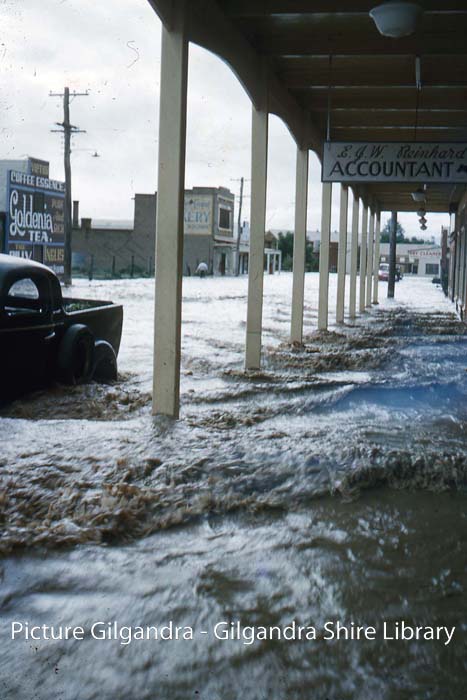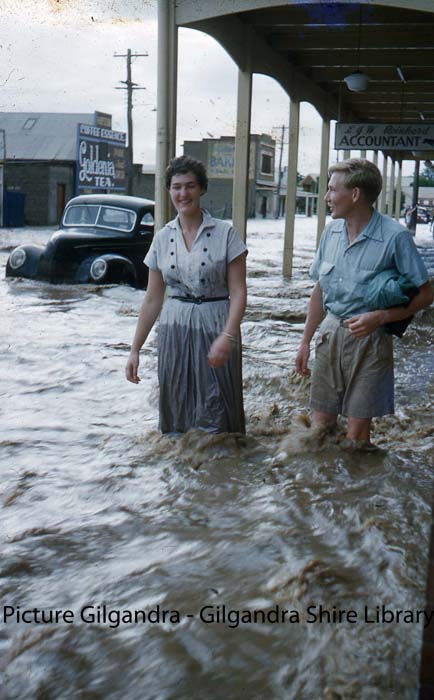From Wikipedia –
During 1955, Gilgandra was flooded. This caused havoc throughout the small town with the water reaching a height of 5 feet, 7 inches in the main street, Miller Street. Many were left homeless as over three hundred homes were flooded. People spent the night on rooftops, one woman perched on the top of a truck all night and watched as a house and other large debris rushed by in the swiftly flowing waters. Two men were killed. Mr. Edward Hobbs took refuge on a windmill which the swirling waters undermined; when it fell it is believed Mr. Hobbs was crushed by its weight. In the area near the racecourse lived a small community of people who took refuge in the grandstand. A 52 year old racecourse caretaker, Edward Ryan disappeared when his nearby home collapsed and was later washed away. The damage left behind was massive, and men came from all over including Sydney to help the town rebuild. The flood made worldwide headlines, the town received a message of condolence from the Pope.
The following photographs of the flood are just a selection from those uploaded to our catalogue. You can have a look through all of the pictures and their accompanying stories here.

This was taken looking south along Miller Street toward the main business area. The tall building with the spire on top is the bank building [Commercial Banking Company of Australia] located on the corner of Bridge and Miller Streets. The photographer was standing approximately where Court Street intersects with Miller Street.

At the front of the Golden West Hotel [Imperial Hotel]. The flood water reached reached the verandah decking above.

This was taken outside the Royal Hotel looking west along Bridge Street toward Morris Street. The accountant whose sign you can see was E.J.W. Reinhard.


Teachers at the High School, Maria Graphos (Home Science) and Ian Fletcher (English), made a narrow escape from the flood waters by holding onto a fence. Here they are pictured firstly under the awning of the Royal Hotel and then in Court Street, ten minutes later. You can see the heights of the water and how quickly it rose.

For this shot, the photographer was standing outside the Royal Hotel looking north along Miller Street. The building on the right hand side of the photo is the Gilgandra Weekly building.


And here looking south along Miller Street.
All of the coloured photographs above were taken by Robert Cater.


This is Lower Miller Street. The store on the right hand side of the first photo was owned by Snow Collison and his house was beside it. The flood water went through the house at ceiling height [about 6ft].

















